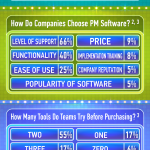The Most Common IT Compliance Risks Your Business Will Ever Face
In today’s interconnected world, businesses rely heavily on technology to streamline operations, reach wider audiences, and stay competitive. However, along with these benefits comes a big concern: IT compliance risks. These risks, if not properly managed, can lead to legal issues, financial losses, and sometimes irreparable reputational damage. In this blog, we’ll check out the most common IT compliance risks that businesses may encounter and provide insights into how to mitigate them effectively.
Intro to IT Compliance Risks
IT compliance risks refer to the potential violations of regulations, laws, and industry standards that govern how organizations handle their technology infrastructure, data, and operations. In an era where data breaches and cyber threats are on the rise, compliance becomes crucial to safeguard sensitive information and maintain customer trust. Let’s explore some of the most prevalent IT compliance risks that businesses must address.
Data Security and Privacy Compliance
In the digital age, data is the lifeblood of businesses. From customer profiles to proprietary information, safeguarding data is paramount. Non-compliance with data security and privacy regulations, such as the General Data Protection Regulation (GDPR) or the California Consumer Privacy Act (CCPA), can result in hefty fines and severe reputational damage. Failure to secure sensitive data could lead to unauthorized access, breaches, and loss of customer trust.
To mitigate this risk, businesses must implement robust security measures, including encryption, access controls, and regular security audits. Clear data handling policies and employee training are also vital to ensure that data is managed in accordance with relevant regulations. Being proactive in addressing these concerns can help organizations avoid the dire consequences of data breaches.
Cybersecurity Vulnerabilities and Threats
The evolving landscape of cyber threats poses a significant IT compliance risk. Hackers are continually finding new ways to exploit vulnerabilities in IT systems. A single breach can expose confidential information, disrupt operations, and damage a company’s reputation. Failure to adhere to cybersecurity standards and best practices can lead to legal liabilities, financial losses, and regulatory penalties.
To address this risk, businesses should invest in comprehensive cybersecurity measures, including regular vulnerability assessments, intrusion detection systems, and employee cybersecurity training. By staying vigilant and proactive, organizations can minimize the risk of falling victim to cyberattacks.
Cloud Computing Compliance
The adoption of cloud computing has revolutionized the way businesses operate, offering scalability and flexibility. However, it also introduces unique compliance challenges. Many regulations, such as the Health Insurance Portability and Accountability Act (HIPAA) and the Payment Card Industry Data Security Standard (PCI DSS), have specific requirements for data stored in the cloud. Non-compliance can result in legal repercussions and/or unintentional data exposure.
To navigate this risk, businesses must carefully select cloud service providers that adhere to relevant compliance standards. They should also establish clear contracts outlining data ownership, security measures, and breach notification protocols. Regular assessments of the cloud environment’s compliance posture are essential to ensure that data remains secure and compliant.
Regulatory Compliance in Emerging Technologies
As new technologies emerge, so do regulatory challenges. Innovations like artificial intelligence, Internet of Things (IoT), and blockchain bring immense potential but also raise questions about how they fit into existing regulatory frameworks. Failing to understand and address the compliance implications of these technologies can lead to unexpected legal and financial consequences.
To mitigate this risk, businesses should stay informed about emerging technologies and their potential impact on compliance. Collaborating with legal experts and industry peers can provide valuable insights into navigating the regulatory landscape. By proactively assessing the compliance implications of new technologies, businesses can harness their benefits while avoiding compliance pitfalls.
Proactive Strategies for Mitigating IT Compliance Risks
The first step in addressing IT compliance risks is conducting a thorough risk assessment. Identify the specific regulations that apply to your industry and assess the potential impact of non-compliance. By understanding your organization’s vulnerabilities, you can prioritize areas that require immediate attention and allocate resources effectively.
Next, establishing clear and comprehensive IT policies and procedures is essential for compliance. These documents should outline how your organization handles data, security measures, and employee responsibilities. Regularly review and update these policies to reflect changes in regulations and technology.
Another important factor is offering ongoing employee training. Your employees play a crucial role in maintaining IT compliance. Provide regular training sessions to educate them about data security, privacy protocols, and cybersecurity best practices. When your team is well-informed, they become the first line of defense against potential compliance breaches.
Lastly, collaborate with compliance experts. Navigating the complex landscape of IT compliance requires expertise. Collaborate with legal advisors and compliance experts who understand the nuances of regulations relevant to your industry. Their insights can help you develop effective strategies for mitigating compliance risks and staying up-to-date with evolving requirements.
Cover Image by Freepik
















